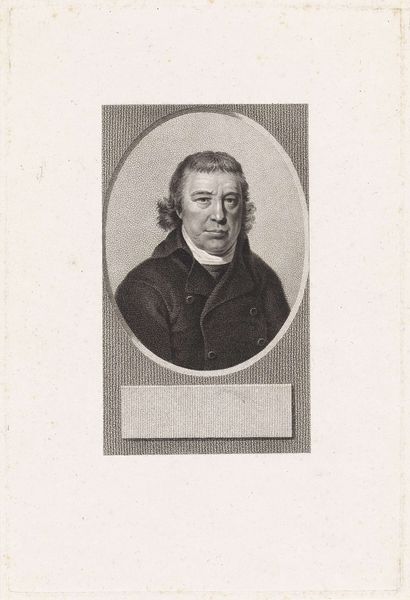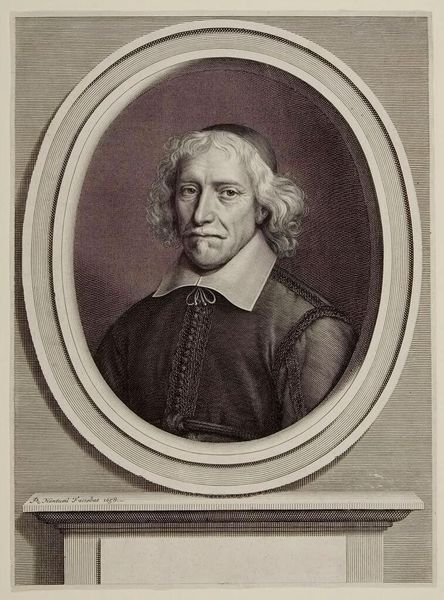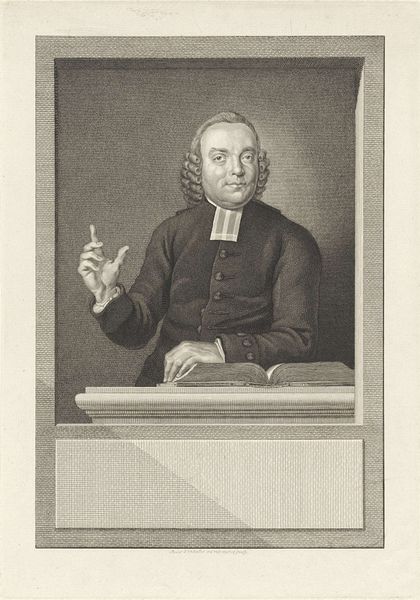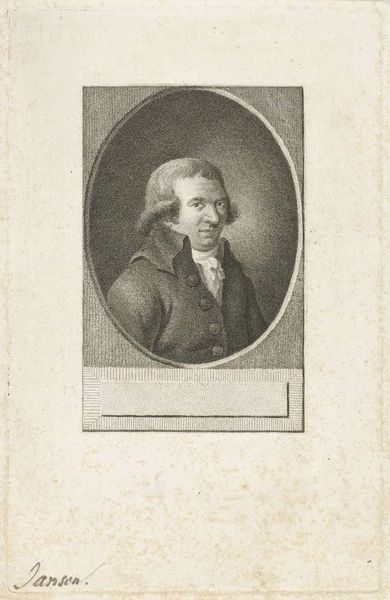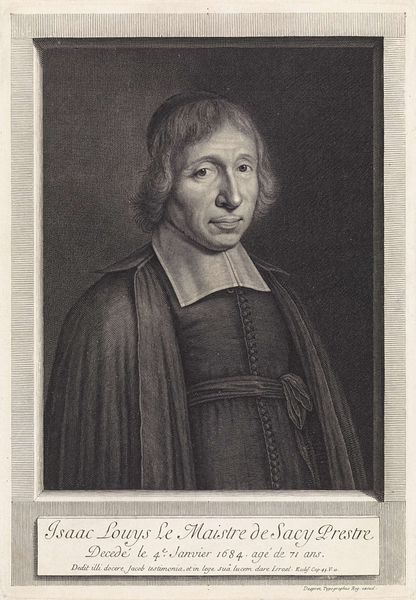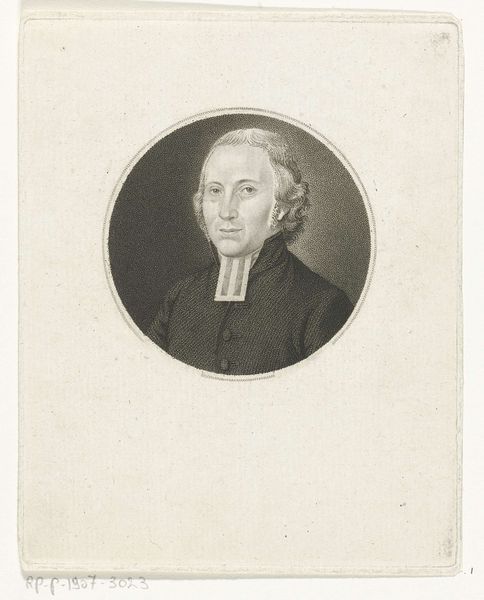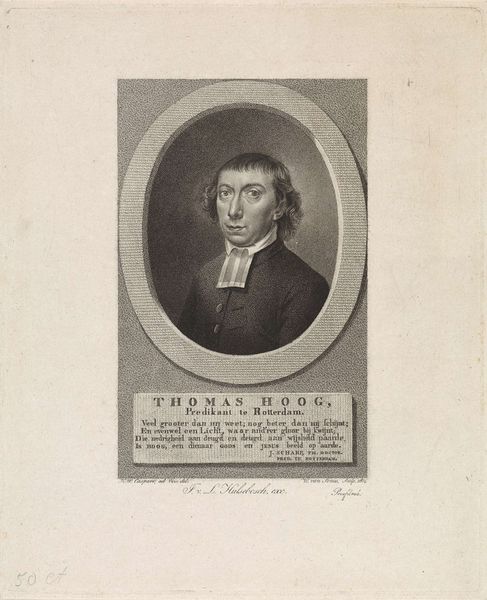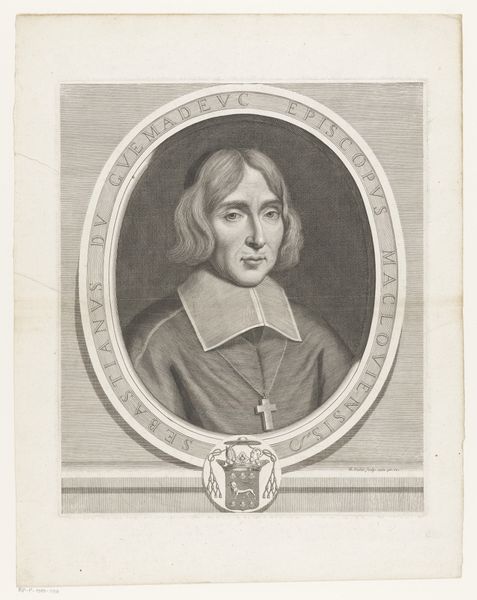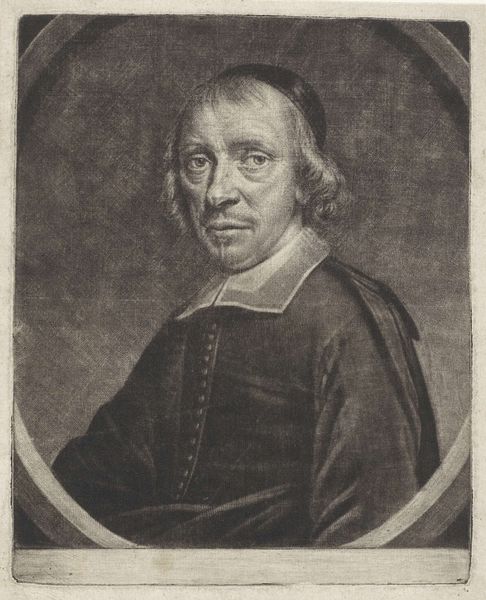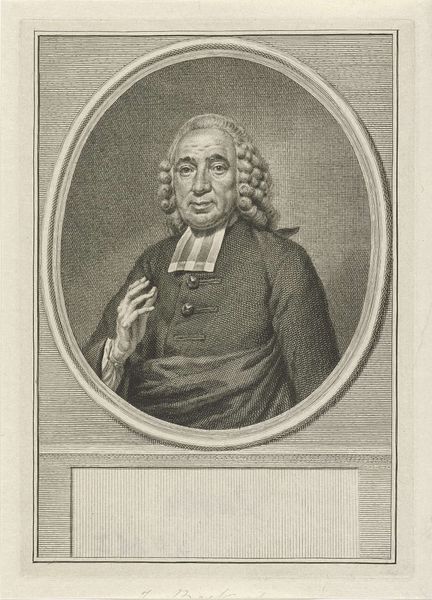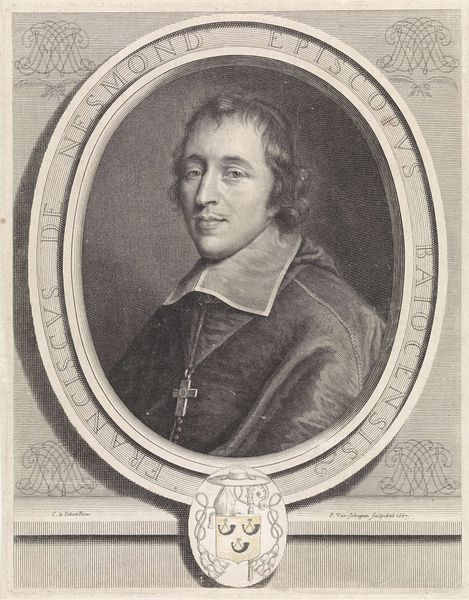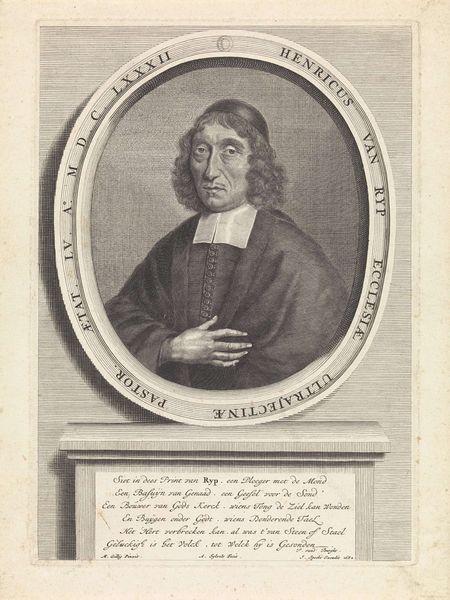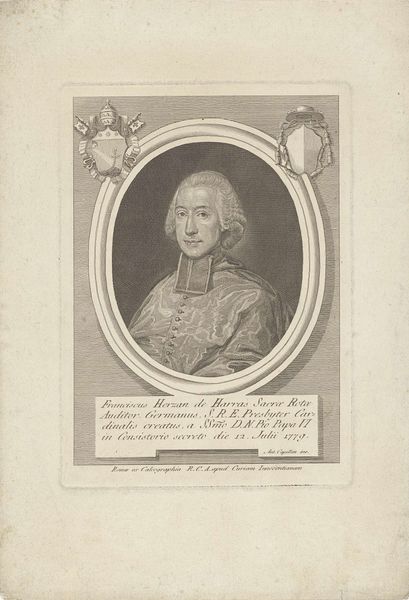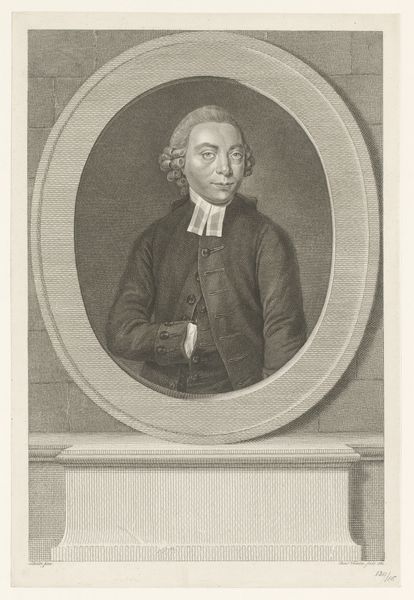
#
photo of handprinted image
#
wedding photograph
#
photo restoration
#
light coloured
#
archive photography
#
historical photography
#
digital photo altering
#
old-timey
#
framed image
#
19th century
Dimensions: height 219 mm, width 141 mm
Copyright: Rijks Museum: Open Domain
Editor: So, we have before us a portrait of Arend Fokke Simonsz., a poet, crafted in 1805 by Ludwig Gottlieb Portman. It appears to be a print of some kind. It feels quite formal, but also strangely… muted, perhaps constrained by its time? What can you tell me about this image? Curator: Well, given that this is a portrait of a poet created in 1805, it’s important to consider the role of the artist as a documentarian but also as a constructor of image. Portraits in this era served a distinct social function, announcing the sitter's status and, more importantly, solidifying their place within intellectual or social circles. Notice how the frame almost traps him, as if to contain this figure of civic importance. Do you think that's the goal? Editor: That’s a great point. I hadn’t considered the function of display. The frame certainly boxes him in. Did the socio-political environment affect the poetry being written at the time and, perhaps, influence how poets were perceived? Curator: Absolutely. Think about the political upheaval sweeping across Europe at this time. The Napoleonic era would influence every element of art and life. Social upheavals led to new modes of civic expression and new anxieties. Did someone commissioning a portrait in this period want to associate themselves with the revolution, or signal something of the past? Editor: So, this portrait isn’t just a likeness, but a carefully constructed representation of identity within a specific political landscape. That adds a whole new layer. I think, looking again, that the severe framing speaks more to preserving stability than signaling disruption. Curator: Exactly! I'm glad we had this little walk through history and politics, in order to show that art rarely just… *is*. Editor: I’ll definitely look at portraits with a different perspective now. Considering the social and political forces at play really illuminates the artist’s choices. Thank you!
Comments
No comments
Be the first to comment and join the conversation on the ultimate creative platform.
